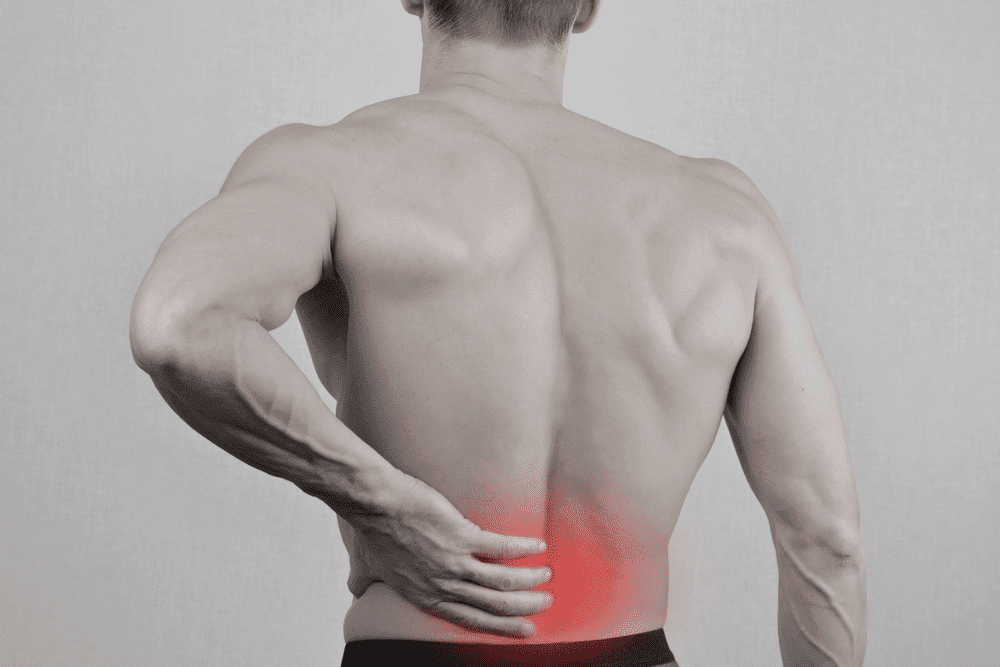Pain. We’ve all experienced it, and we all have our preferred methods for treatment. For instance, some apply cold to a tender spot, while others opt for heat. But what about pain that persists and weighs upon your shoulders every day? When you’ve seemingly tried everything and nothing has worked, it’s time for a new approach. At North Texas Vein & Vascular in Flower Mound, TX, we have several pain treatment options to address your individual needs.
What Is the Best Pain Treatment?
This depends on what you’re experiencing, as different pain sources have different needs. Migraines, for instance, have long been treated with prescription medications, while nonsteroidal anti-inflammatory drugs (NSAIDs) are often recommended for arthritis pain. Although easy to administer, these pills don’t always work and are associated with risks of dependency and other tragedies.
Pain treatment is a centuries-old effort, but the industry surrounding this concept only started in the early 2000s. It was fueled by optimism thanks to developments like new opioid formulations and organized pain treatment establishments. Although many providers continue to rely on opioids, research has shed light on new options that are both fast-acting and long-lasting, without the litany of side effects presented by oral medications.
SphenoCath
Speaking of headaches, it’s easy to lump them together as being one problem with one cause. But the truth is they can be triggered by a variety of factors, including stress, lack of sleep, and hormones.
Likewise, nerves located deep within the nasal passage known as the SPG nerve bundle can be major players in head and facial pain. Blocking the signals that pass between these nerves with the SphenoCath method is therefore a fruitful way to relieve chronic headaches and migraines.
How It Works
A flexible catheter is used to deliver Lidocaine to a thin membrane that lays over the SPG. The catheter is inserted sequentially into both nostrils, and patients lie with their heads tilted back for just five minutes as the overlying membrane quickly absorbs the lidocaine. Pain relief takes place quickly and helps break a previously unmanageable cycle of migraines to restore a baseline pattern.
In the past, treatment options to block the SPG were highly uncomfortable and involved either a lidocaine-saturated Q-tip inserted deep into the nasal passage for 20 to 40 minutes or a needle placed right into the SPG from the side of the head. The SphenoCath is safer, better tolerated, and works far more quickly than these options. This treatment can effectively ease the following types of pain:
- Migraines
- Cluster and post-concussive headaches
- Facial pain
- Craniofacial pain
- Trigeminal neuralgia
Vertebroplasty and Kyphoplasty
These minimally invasive treatments ease the pain associated with vertebral compression fractures (VCF) – bones in the spinal column. When one of these bones fractures, its shape becomes compressed and triggers the sensation of pain. These fractures may involve the collapse of one or more spinal vertebrae and are commonly caused by osteoporosis, a disease marked by a loss of bone strength, mass, and density.
Vertebroplasty requires image guidance (real-time X-rays) that allows a physician to inject the fractured bone with a cement mixture. Kyphoplasty differs slightly in that a high-pressure balloon is first inserted into the fractured bone to create the space needed to accommodate the cement. Once the balloon is removed, the mixture is then injected.
Treatment Benefits
Both treatments help to stabilize the vertebral body and, by deactivating some nerve fibers irritated by the fracture, provide immediate pain relief. The cement takes about 15 minutes to harden and can even restore height to improve skeletal functions. The spine serves as the central axis of the skeleton, and if height or stability are lost, the spine loses its overall shape. This can lead to:
- Impaired respiratory function
- Increased pressure on digestive organs
- Permanent body shape change, including a humpback
- Difficulty raising the head
Both vertebroplasty and kyphoplasty are recognized as one of the most successful ways to relieve pain after a compression fracture. Patients are fully mobile after treatment, and both options preserve the spine’s natural shape without the risks presented by major surgery. These therapies also bring more immediate relief than more traditional recommendations like bed rest, oral pain medications, or a back brace.
Relatively Easy to Perform
It’s worth noting that conservative therapies like activity modification can increase the prevalence of bone loss. They can also weaken muscles and promote overall physical deterioration. Vertebroplasty and kyphoplasty, by contrast, promote mobility, a key factor in fighting the symptoms of osteoporosis.
Although they may sound complex, both treatments can be performed with relative ease. The patient lies face down, staff administers a local or general anesthesia, and the physician makes a small incision in the skin. A tube or working channel is then guided into the fractured bone, and either a balloon is inserted and inflated into the area or the cement mixture is immediately injected. Once it sets, that cement serves as an internal cast.
Joint Injections
Like all types of pain, that associated with joints can have multiple causes and is therefore difficult to treat. Inflammation, infection, cartilage degeneration, and trauma are just some of the factors that can lead to joint pain. When evaluating a patient, the goals are therefore to localize the pain source and then find ways to offer relief.
We begin this process by injecting numbing medication into a specific spot, such as the sacroiliac joints (SI). Located at the bottom of the spine, these joints connect the hip with the sacrum on both sides. Up to 30% of all lower back pain cases can be traced to this joint, which can also be a source of leg pain. The problem in diagnosing the latter is that it’s difficult to determine whether the pain is caused by a lumbar disc herniation or a damaged SI joint.
Isolation Is Key
We must start by trying to isolate the pain’s source. Once numbing medication is injected, we ask the patient for a pain evaluation. A 75 to 80% improvement means the SI joint is the likely cause, and we can then proceed with steroid injections into the joint space. These have shown to relieve pain for around three months and can be easily re-administered for continued relief.
Steroid injections are not limited to the SI joint and can also be used to relieve hip, knee, and shoulder joint pain. The process is the same: we first inject a local anesthetic to pinpoint the pain source and then move forward with long-lasting corticosteroids. The therapeutic benefits of these shots don’t stop at pain relief and additionally provide patients with:
- Reduced inflammation
- Preservation of joint structure and function
- Ongoing pain relief
Key Details
For many patients, steroid shots become components of their standard healthcare routine. They help increase the body’s natural anti-inflammatory and immune-suppressing processes and can relieve pain associated with injury, arthritis, and overuse. Many patients experience relief within a few short hours, while others notice a marked improvement after several days.
Ideally, patients who receive these injections combine them with exercise and/or physical therapy. As we said earlier, one of the best ways to fight bone degeneration is by continuing to move. Pain can limit mobility, which is why fighting it is so important to overall health.
The Complex Nature of Pain
Pain is complex for a number of reasons, including the fact we each experience it uniquely. An injury that causes pain in your body may trigger only minor discomfort in another’s. What is shockingly consistent is the prevalence of pain; the National Institutes of Health indicates around 50 million people suffer from chronic or severe pain every day. To help you understand the meaning behind this number, consider these statistics:
- 21 million people are diagnosed with diabetes
- 14 million have cancer
- 28 are diagnosed with heart disease
It’s easy to see we have an epidemic in this country, but unlike treatments for other diseases, pain therapies have been slow to evolve. This might be because pain, when given its proper due, can’t be treated with a one-size-fits-all approach. NSAIDs may offer one patient relief but not another, and many healthcare providers are slow to consider new options because they don’t understand the patient’s underlying cause of pain.
Re-Framing Pain Conversations
Different pain sources are intended to convey different messages. That from arthritis, for instance, is used to alert a person of damage sustained by the body. Sometimes, however, these messages are harder to decipher because they’re associated with conditions that have no known cause. Fibromyalgia is a good example and, because of its mysterious nature, often gets misdiagnosed.
These misdiagnoses can also accompany a dismissal by healthcare providers that claims of pain are nothing more than drug-seeking behaviors. This is why changing the approach we take to pain can be key in providing relief; when options other than prescription pills are available, we not only increase patient success rates but also eliminate the assumption that patients seek intervention for reasons other than therapeutic.
The Need for Pain Management
These limiting beliefs keep people from the care they need – care that can improve mood, sleep, and physical activity. When not properly managed, pain can have adverse outcomes on patients and their families. It can, for instance, suppress the immune system and even have negative consequences on internal systems, including the heart.
With regard to clinical care, unrelieved pain reduces mobility, as we’ve already mentioned, and predisposes patients to complications like deep vein thrombosis, pneumonia, and pulmonary embolus. The effects of continuous unrelieved pain can also have psychological impacts that include depression and anxiety. When patients feel they can’t escape pain, a sense of hopelessness is likely to take over and increase the symptoms of depression.
The Solution
These factors make it necessary to not only listen to patients who say they are in pain but to also find ways to relieve it. Opioids and NSAIDs may have their place within this framework, but seeking new modalities is equally important. This is why we encourage patients who have unsuccessfully tried other options to speak with us about the modalities we offer.
Corticosteroid injections, for instance, have an 80% patient success rate in reducing pain and improving joint function. The SphenoCath likewise boasts a 90% success rate. These treatments have far-reaching impacts that include restoring patients’ trust in medicine and encouraging them to seek medical care for their other health problems.
Seek a New Alternative
Pain treatment should be tailored to your needs, not a blanket approach that doesn’t consider your unique situation. With different options for headaches, vertebrae injuries, and joint paint, we can provide the relief you seek. Schedule your consultation today by calling North Texas Vein & Vascular in Flower Mound, TX.

